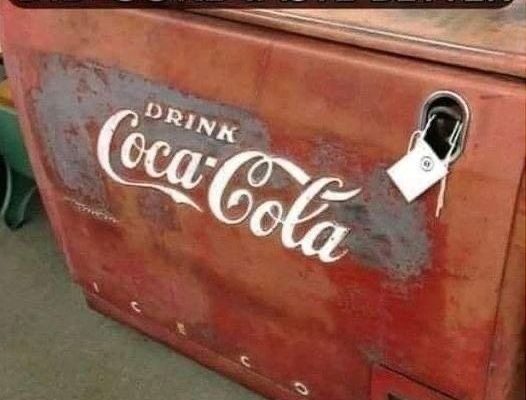We’re settling the debate with a blind taste test.
People have strong opinions about their Coca-Cola, from die-hard Diet Coke drinkers to those who refuse to drink any Coke product unless it’s poured from a fountain.
In the South, many Southerners swear by the superior taste of Coca-Cola in the old-school glass bottles. It may be a bit harder to find than a can or plastic bottle, but you can still buy glass-bottled Coke at most major grocery stores, although it costs more than its original five-cent price tag

Whether it’s nostalgia or the belief that glass bottles somehow enhance the taste, we wanted to put the theory to the test. We conducted a blind taste test with a few of our editors, sampling Coca-Cola from a can, a glass bottle, and a plastic bottle, without knowing which was which. The results were surprising!
We asked eight Southern Living editors to sample soda from three cups, marked A, B, and C. Each cup contained American Coca-Cola, but from three different original containers: a can, a plastic bottle, and a glass bottle. In the blind taste test, each editor ranked the three options based on preference and shared their tasting notes.
To ensure fairness, all three types of Coke were poured into identical paper cups. We excluded fountain soda from the test because each company may use a different amount of syrup or carbonation.
All the soda we sampled was regular American Coca-Cola, with no diet or Mexican Coca-Cola. The three sodas were refrigerated overnight, and served cold during the taste test. We opened and served all the containers at the same time to maintain carbonation.
After tasting each cup, our editors wrote down their observations on sweetness, carbonation, and flavor.
The Can
Six out of eight editors felt that the Coca-Cola from the can was more carbonated. One editor described it as tasting exactly like what Coke should taste like. However, two editors disagreed, finding it flatter and sweeter. One editor even thought it tasted like it had been sitting in ice.
The Plastic Bottle
Editors described Coca-Cola from the plastic bottle as having a metallic flavor, which was surprising. Many editors also felt it had more bite or fizz than the other two options, with one editor even finding a hint of spiciness. Another editor noticed an almost lemony flavor.
The Glass Bottle
The glass-bottled Coca-Cola had a notable syrupy flavor, according to our editors. One editor thought it tasted so strong that they almost mistook it for Coke Zero. Another editor loved the sweetness and syrupiness, mentioning that it would be great to drink with rum.
The can! It was the narrow winner, as four editors ranked it first, while three editors preferred the glass bottle. Coca-Cola from a plastic bottle came in last, preferred by only one editor.
Despite a close competition between the glass bottle and the can, many Southerners in the room were shocked to find that they actually preferred Coca-Cola from the can. While Coca-Cola insists that the formula is the same regardless of the container, it was interesting to see how our editors perceived taste differences.
The levels of perceived carbonation also varied depending on the container. Scientifically speaking, glass is the most inert material, meaning it’s least likely to react and interfere with the taste of the soda.
Even if science doesn’t back us up, we’ll continue to reach for the glass bottle alongside peanuts as our go-to snack.
We’re settling the debate with a blind taste test.
People have strong opinions about their Coca-Cola, from die-hard Diet Coke drinkers to those who refuse to drink any Coke product unless it’s poured from a fountain.
In the South, many Southerners swear by the superior taste of Coca-Cola in the old-school glass bottles. It may be a bit harder to find than a can or plastic bottle, but you can still buy glass-bottled Coke at most major grocery stores, although it costs more than its original five-cent price tag

Whether it’s nostalgia or the belief that glass bottles somehow enhance the taste, we wanted to put the theory to the test. We conducted a blind taste test with a few of our editors, sampling Coca-Cola from a can, a glass bottle, and a plastic bottle, without knowing which was which. The results were surprising!
We asked eight Southern Living editors to sample soda from three cups, marked A, B, and C. Each cup contained American Coca-Cola, but from three different original containers: a can, a plastic bottle, and a glass bottle. In the blind taste test, each editor ranked the three options based on preference and shared their tasting notes.
To ensure fairness, all three types of Coke were poured into identical paper cups. We excluded fountain soda from the test because each company may use a different amount of syrup or carbonation.
All the soda we sampled was regular American Coca-Cola, with no diet or Mexican Coca-Cola. The three sodas were refrigerated overnight, and served cold during the taste test. We opened and served all the containers at the same time to maintain carbonation.
After tasting each cup, our editors wrote down their observations on sweetness, carbonation, and flavor.
The Can
Six out of eight editors felt that the Coca-Cola from the can was more carbonated. One editor described it as tasting exactly like what Coke should taste like. However, two editors disagreed, finding it flatter and sweeter. One editor even thought it tasted like it had been sitting in ice.
The Plastic Bottle
Editors described Coca-Cola from the plastic bottle as having a metallic flavor, which was surprising. Many editors also felt it had more bite or fizz than the other two options, with one editor even finding a hint of spiciness. Another editor noticed an almost lemony flavor.
The Glass Bottle
The glass-bottled Coca-Cola had a notable syrupy flavor, according to our editors. One editor thought it tasted so strong that they almost mistook it for Coke Zero. Another editor loved the sweetness and syrupiness, mentioning that it would be great to drink with rum.
The can! It was the narrow winner, as four editors ranked it first, while three editors preferred the glass bottle. Coca-Cola from a plastic bottle came in last, preferred by only one editor.
Despite a close competition between the glass bottle and the can, many Southerners in the room were shocked to find that they actually preferred Coca-Cola from the can. While Coca-Cola insists that the formula is the same regardless of the container, it was interesting to see how our editors perceived taste differences.
The levels of perceived carbonation also varied depending on the container. Scientifically speaking, glass is the most inert material, meaning it’s least likely to react and interfere with the taste of the soda.
Even if science doesn’t back us up, we’ll continue to reach for the glass bottle alongside peanuts as our go-to snack.



